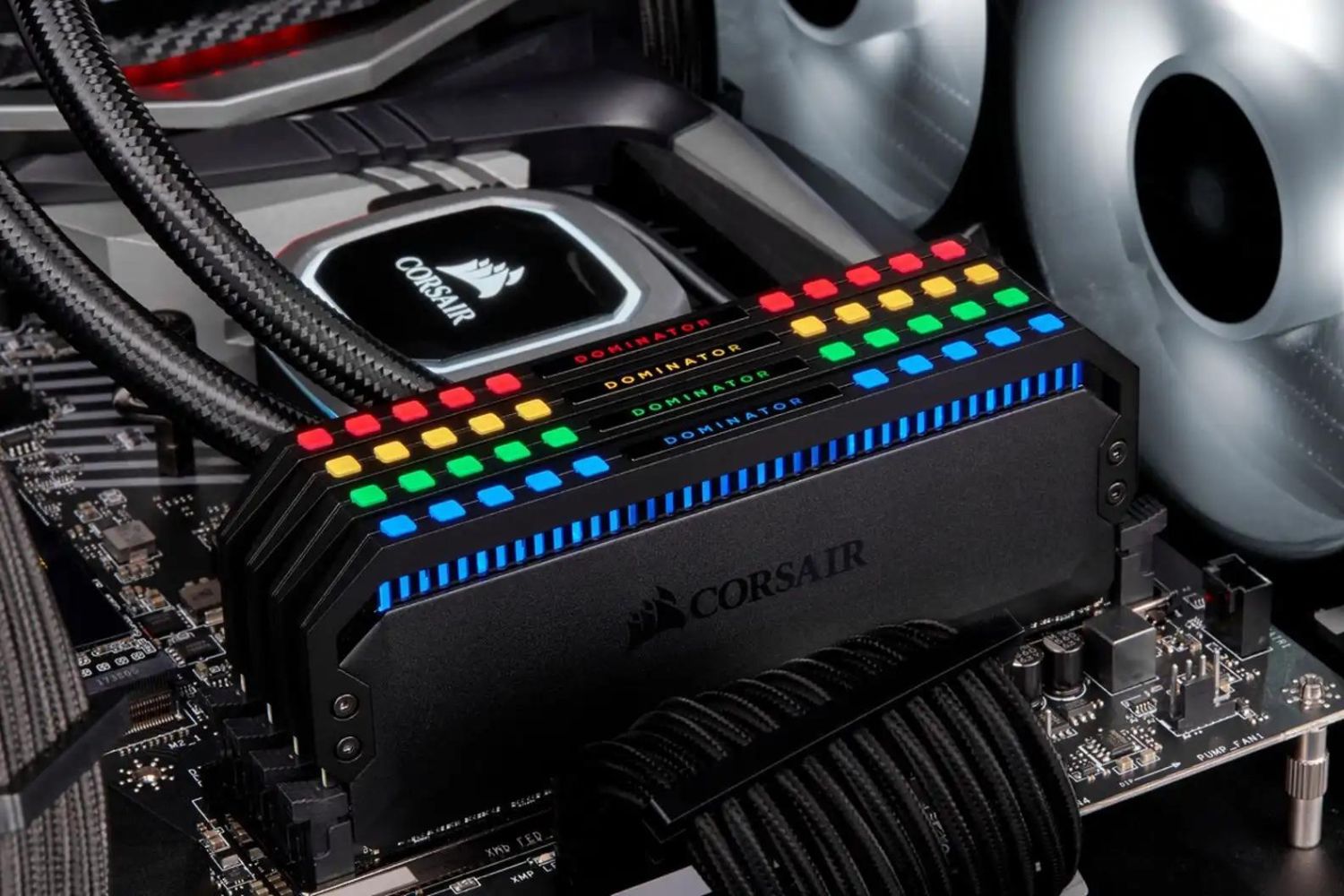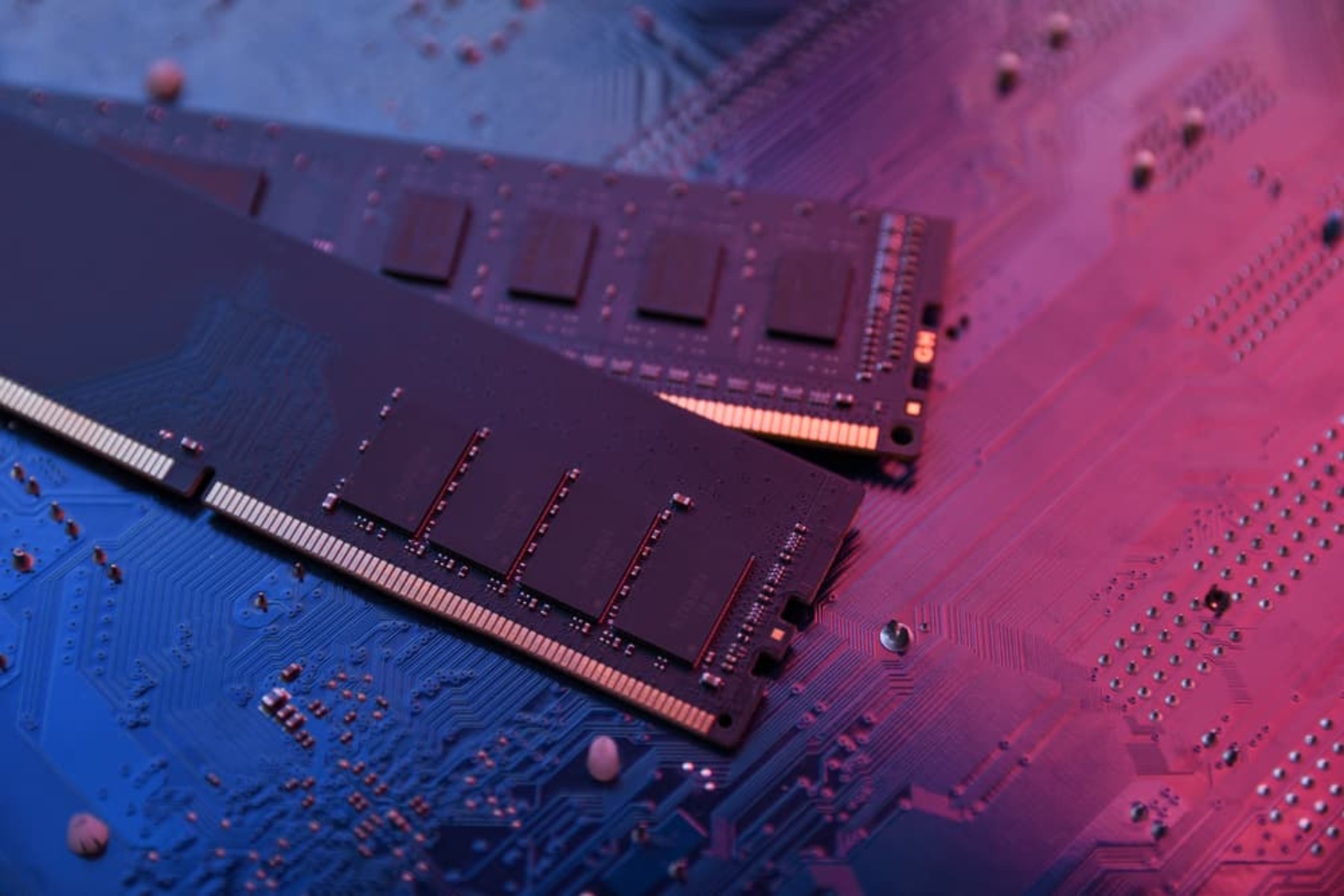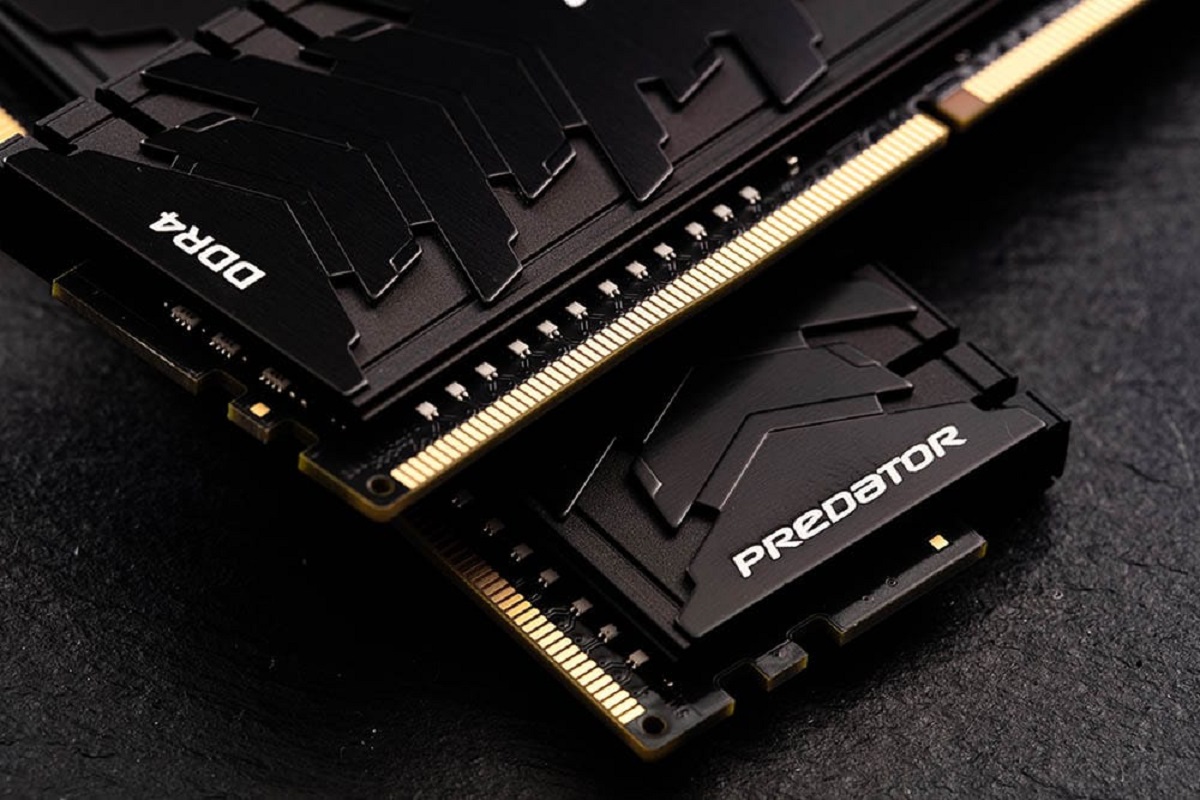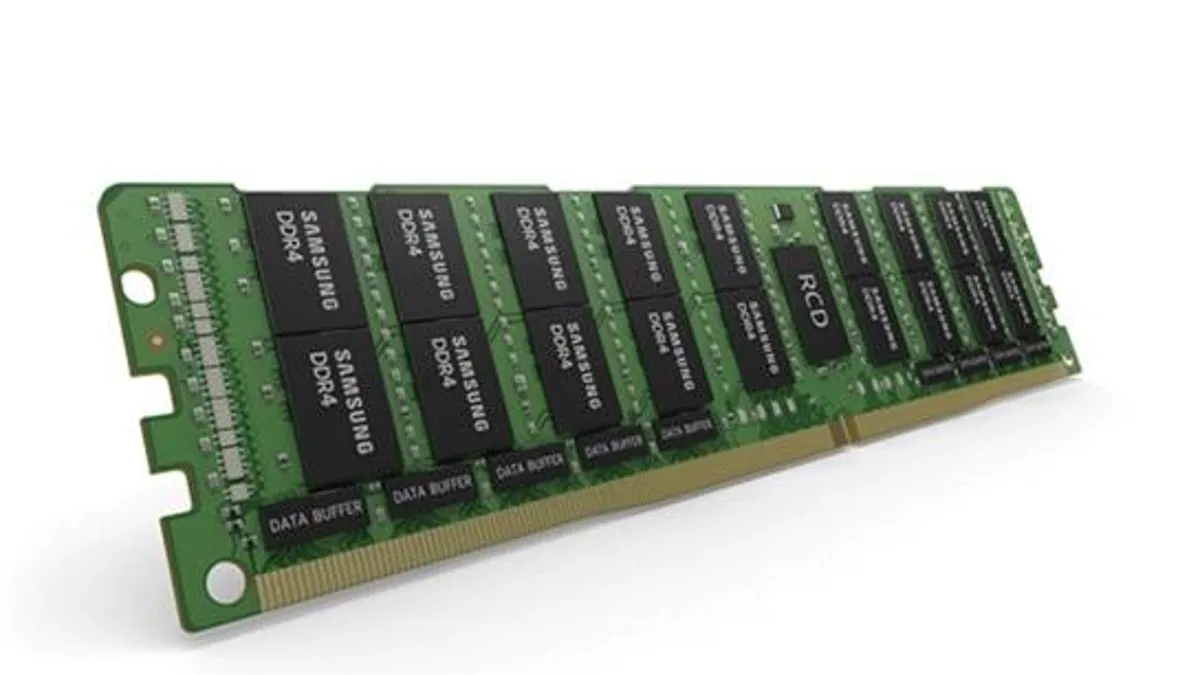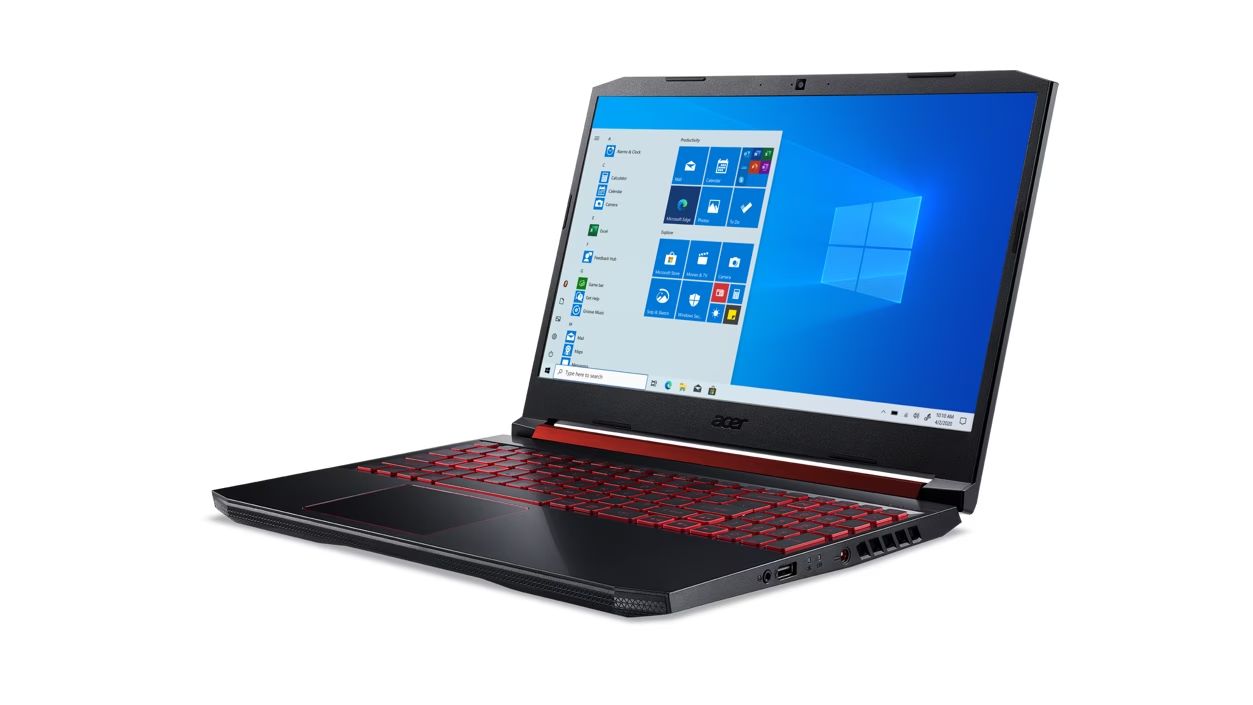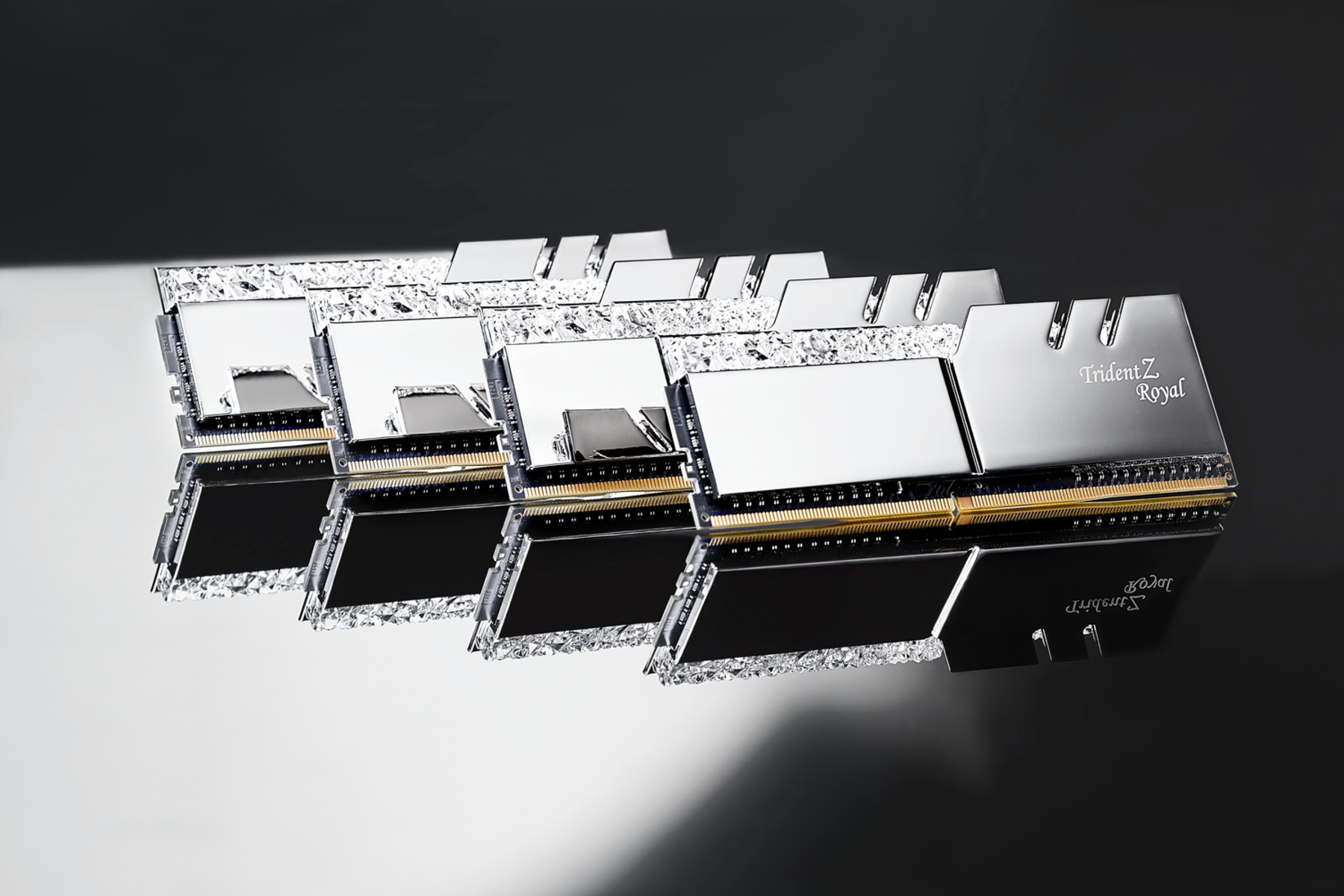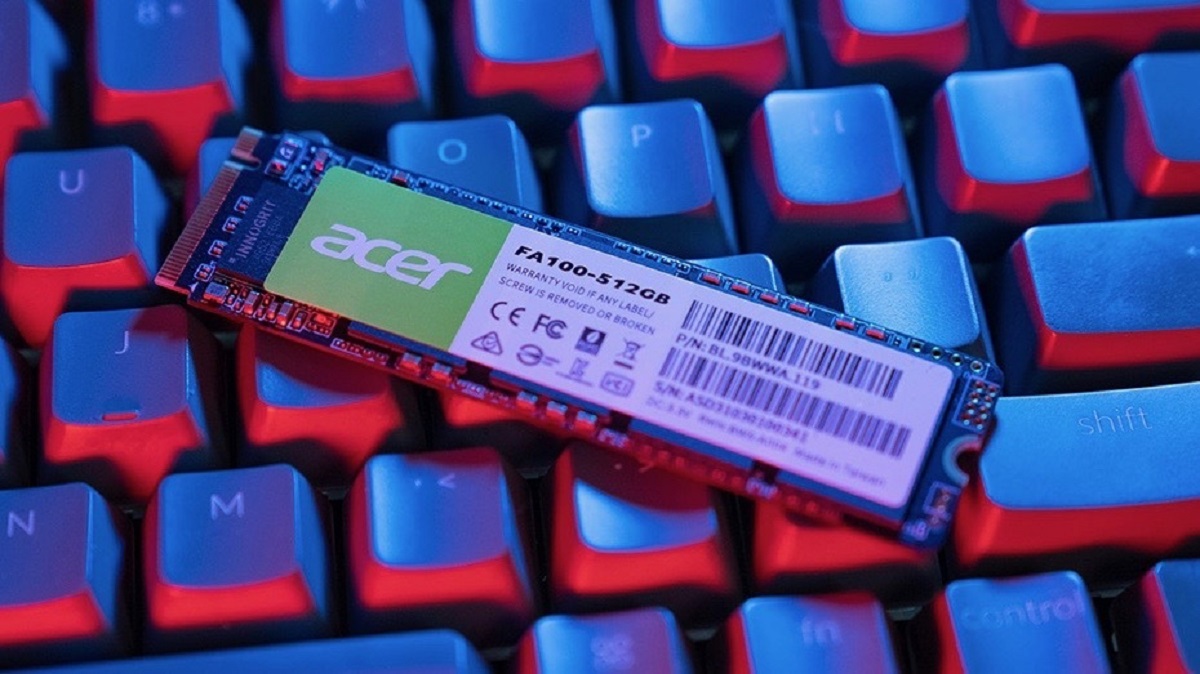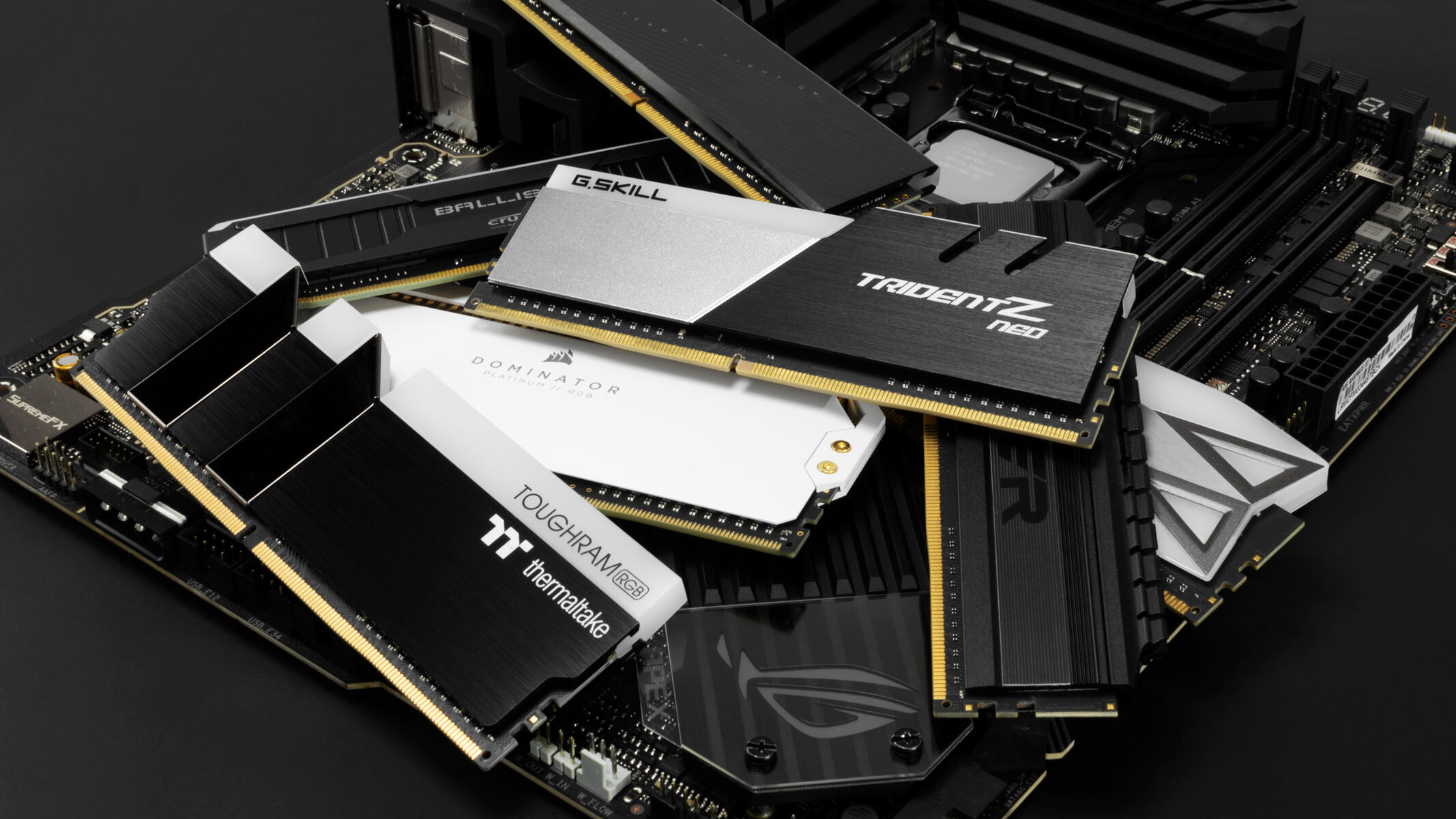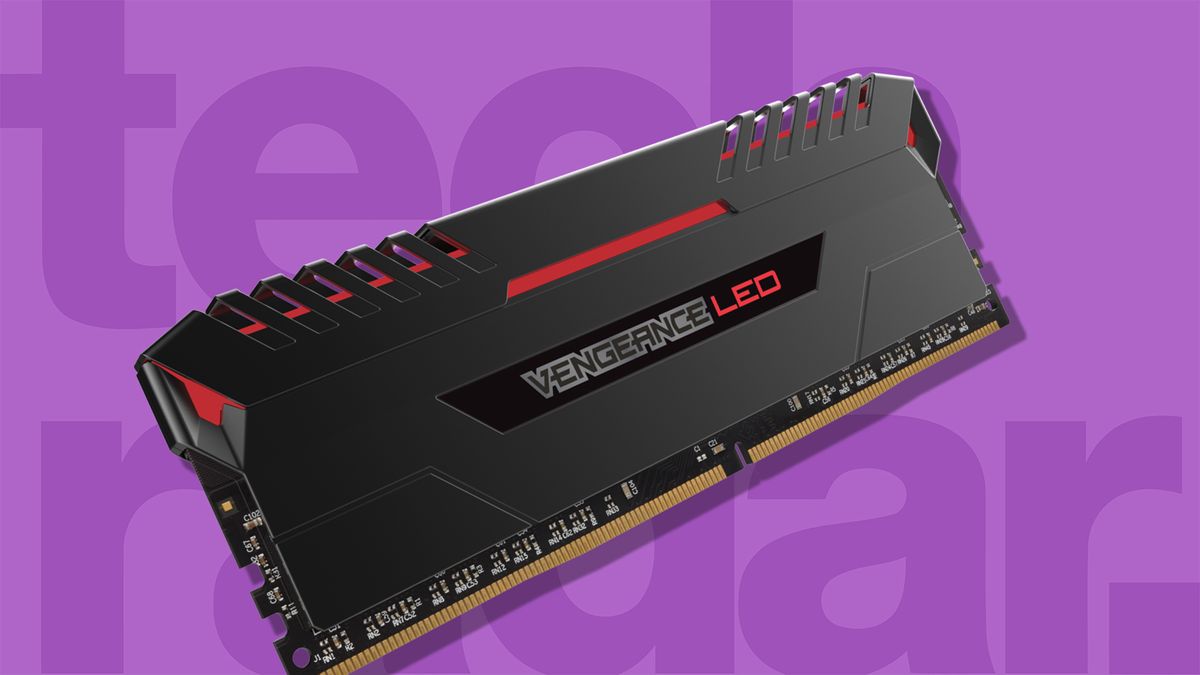Introduction
Welcome to the world of computer hardware, where every component plays a vital role in the overall performance of your system. When it comes to enhancing the speed and efficiency of your computer, one of the most important factors to consider is the amount of Random Access Memory (RAM) you have. However, with a multitude of RAM brands available in the market, finding the right one can be a daunting task.
This article aims to provide you with a comprehensive guide on how to find the perfect RAM brand for your computer. Whether you are building a new PC or upgrading your existing system, choosing the right RAM brand can greatly impact its performance and longevity. We will explore the different factors you should consider, how to research different brands, and seek recommendations to make an informed decision.
Before we dive into the details, let’s briefly understand the role of RAM in your computer. RAM is the temporary storage space where your computer stores active data that it needs to access quickly. It allows your computer to run multiple tasks simultaneously and ensures smooth performance. Insufficient RAM can lead to sluggishness, slow loading times, and an overall decrease in productivity.
Now that we understand the importance of RAM, let’s delve into the factors you need to consider when choosing a RAM brand. By considering these factors, you can make an informed decision and select the brand that best suits your needs and budget.
Overview of RAM Brands
When it comes to RAM brands, there are several well-known manufacturers in the market. Each brand offers different types and models of RAM, with varying performance levels, compatibility, and customer support. Let’s take a closer look at some of the top RAM brands in the industry:
1. Corsair: Corsair is a highly reputed brand known for its high-quality performance memory modules. They offer a wide range of DDR4 RAM modules that cater to different budgets and performance requirements. Corsair RAM modules are popular among gamers and PC enthusiasts for their reliability and overclocking capabilities.
2. Crucial: Crucial, a subsidiary of Micron Technology, is renowned for its reliable and affordable RAM modules. They manufacture DDR3 and DDR4 RAM modules that are compatible with a wide range of systems. Crucial RAM is known for its excellent compatibility and stability, making it a popular choice for those seeking dependable performance.
3. Kingston: Kingston is a well-established brand that has been manufacturing RAM for decades. Their HyperX series is particularly popular among gamers for its high-speed and high-capacity modules. Kingston offers a wide range of DDR3 and DDR4 RAM modules that are known for their performance, reliability, and compatibility.
4. G.Skill: G.Skill is known for its cutting-edge RAM modules aimed at gamers and overclocking enthusiasts. They offer a range of DDR4 RAM modules with high frequencies and low latencies, providing top-notch performance. G.Skill RAM is widely recognized for its exceptional overclocking capabilities, making it a popular choice among PC enthusiasts who want to push their systems to the limit.
5. Team Group: Team Group is a relatively newer player in the RAM market but has gained recognition for its high-quality and affordable RAM modules. They offer a range of DDR3 and DDR4 RAM modules with different speeds and capacities to suit various user requirements. Team Group RAM is known for its value for money and reliable performance.
These are just a few of the many RAM brands available in the market. Each brand offers its unique features, performance characteristics, and price points. It is important to research and compare different brands to find the one that aligns with your specific needs and preferences.
In the next section, we will explore the factors you should consider when choosing a RAM brand and how to research the different options available.
Factors to Consider When Choosing a RAM Brand
When selecting a RAM brand, it is important to take into account several factors that can greatly impact your computer’s performance and your overall experience. Here are some key factors to consider:
1. Compatibility: The first and foremost factor to consider is compatibility with your system. Check the specifications of your motherboard and ensure that the RAM you choose meets the supported memory types, frequencies, and capacities. Verify if your system requires DDR3 or DDR4 RAM modules.
2. Performance: RAM performance is determined by various factors, such as frequency (measured in MHz), latency timings, and capacity. Higher frequencies and lower latency timings generally result in better performance. Consider your specific usage requirements, whether it’s gaming, multimedia editing, or everyday computing, and choose RAM with sufficient capacity and performance to support those tasks.
3. Brand Reputation: Opting for a trusted and reputable brand can provide you with peace of mind regarding the quality and reliability of the RAM modules. Look for reviews, customer feedback, and ratings to gauge the brand’s reputation in terms of product quality, durability, and customer support.
4. Overclocking Potential: If you are an enthusiast looking to push your system’s performance to the limit, consider RAM modules with good overclocking capabilities. Certain brands and models are designed with overclocking in mind and offer greater flexibility in fine-tuning memory settings for improved performance.
5. Warranty: RAM modules can sometimes experience faults or failures, so it’s important to choose a brand that offers a reliable warranty. Check the warranty period and the terms and conditions provided by the manufacturer to ensure you are protected in case of any issues with the RAM.
6. Budget: RAM prices can vary significantly depending on the brand, specifications, and performance. Deciding on a budget beforehand will help you narrow down your options and find the best value for your money.
By considering these factors, you can make an informed decision and choose a RAM brand that aligns with your system requirements, performance expectations, and budget.
In the next section, we will discuss how to research different RAM brands and gather relevant information to make a well-rounded decision.
Researching Different RAM Brands
Once you’ve identified the factors to consider when choosing a RAM brand, the next step is to conduct thorough research to gather information about different brands and their offerings. Here are some effective ways to research different RAM brands:
1. Online Reviews and Feedback: Start by reading reviews and feedback from both experts and customers. Look for reputable technology websites, forums, and online retailers that provide detailed reviews and ratings for different RAM brands. Pay attention to the overall customer satisfaction, product performance, and reliability mentioned in these reviews.
2. Manufacturer Websites: Visit the official websites of RAM manufacturers that you are considering. Explore their product pages to get detailed specifications, performance benchmarks, and compatibility information. Manufacturer websites often provide comprehensive product data sheets, user manuals, and FAQs that can help you understand their RAM offerings in detail.
3. Comparison Websites: Utilize comparison websites that specialize in computer hardware. These platforms allow you to compare multiple RAM brands side by side based on specifications, features, and prices. This approach helps you make an informed decision by comparing the pros and cons of different brands and their respective models.
4. Tech Communities and Forums: Engage in tech communities and forums where you can interact with experienced users, tech enthusiasts, and experts. Seek recommendations and opinions from knowledgeable individuals who have hands-on experience with different RAM brands. These discussions can provide valuable insights and help you gain a broader perspective on each brand’s performance and reliability.
5. Professional Reviews: Look for professional reviews from reputable technology publications or websites. These reviews often provide in-depth analysis, benchmark tests, and objective evaluations of different RAM brands. By referring to professional reviews, you can gain a deeper understanding of each brand’s performance in real-world scenarios.
Remember that the goal of this research process is to gather as much relevant information as possible to make an informed decision. While considering the opinions of others, prioritize your specific requirements and preferences to find a RAM brand that meets your needs.
In the next section, we will explore additional aspects to consider, such as comparing prices and warranty options, as well as checking compatibility with your system.
Reading Reviews and Feedback
Reading reviews and feedback from both experts and customers is a valuable step in the process of choosing a RAM brand. Reviews provide insights into real-world experiences with the product and can help you make an informed decision. Here are some tips on how to effectively read reviews and feedback:
1. Source Credibility: Start by ensuring that the sources you rely on for reviews and feedback are credible. Look for reputable technology websites, industry publications, and trusted online retailers. These sources often have reliable reviewers who thoroughly test and evaluate RAM modules and provide unbiased opinions.
2. Analyze Overall Ratings: Pay attention to the overall ratings given to the RAM brand you are researching. This will give you a general sense of customer satisfaction and can help narrow down your options. However, keep in mind that ratings alone do not provide a complete picture, so it’s important to delve deeper into individual reviews.
3. Consider the Pros and Cons: Look for reviews that provide a balanced perspective by highlighting both the positive and negative aspects of the RAM brand. Evaluating both the strengths and weaknesses can give you a comprehensive view of the product’s performance, reliability, and compatibility.
4. Look for Specific Use Cases: Consider reviews that are relevant to your specific use case. If you are a gamer, look for reviews that mention gaming performance. If you use your computer for video editing or other intensive tasks, seek reviews that focus on those areas. This allows you to gather insights specific to your needs and requirements.
5. Check for Consistency: Look for consistent feedback across multiple reviews. If a particular issue or concern is repeatedly mentioned, it could indicate a common problem with the RAM brand. On the other hand, consistent positive feedback can give you confidence in the brand’s reliability and performance.
6. Read User Feedback: In addition to expert reviews, consider reading user feedback from customers who have purchased and used the RAM modules. User feedback can provide insights into real-world experiences with the brand, including installation process, compatibility issues, and overall satisfaction.
While reading reviews and feedback, it’s important to keep in mind that opinions can vary. Take into account the overall consensus and patterns in the feedback rather than specific individual opinions. This will help you make a balanced judgment about the RAM brand and its suitability for your system.
In the next section, we will discuss the importance of comparing prices and warranty options, as well as ensuring compatibility with your system.
Comparing Prices and Warranty Options
When choosing a RAM brand, comparing prices and warranty options is crucial to ensure that you get the best value for your investment. Here’s why it’s important and how you can compare these aspects:
1. Price Comparison: RAM prices can vary significantly across different brands and models. It’s important to compare prices to find the best deal without compromising on quality. Consider your budget and the specifications you require, such as RAM capacity and performance. Look for competitive prices from reputable retailers, both online and offline, and take advantage of any promotions or discounts available.
2. Value for Money: While it’s tempting to opt for the cheapest option, it’s important to consider the overall value for money. Cheaper RAM modules may compromise on performance, reliability, or customer support. Balance your budget with the brand’s reputation, specifications, and warranty to ensure you are getting a good balance between cost and quality.
3. Warranty Options: RAM modules can sometimes experience faults or failures, so having a reliable warranty is essential. Consider the warranty period offered by different RAM brands and the terms and conditions provided. A longer warranty period indicates the brand’s confidence in their product’s quality. Additionally, check if the warranty covers not only the RAM module itself but also any potential damage to your system caused by the faulty RAM.
4. Customer Support: In addition to the warranty, assess the customer support provided by the RAM brand. Good customer support can make a significant difference if you encounter any issues or have questions about the product. Look for brands that offer responsive customer service, whether through online support channels, email, or phone.
5. Additional Features: Compare any additional features or benefits offered by different RAM brands. Some brands may provide software utilities for performance optimization, while others may have special heatsinks or RGB lighting options. Consider these additional features if they align with your preferences and requirements.
Comparing prices and warranty options allows you to make an informed decision based on your budget, the longevity of the product, and the support you will receive. It ensures that you not only get the best deal but also peace of mind with your purchase.
In the next section, we will discuss the importance of checking compatibility with your system and seeking recommendations from experts or tech enthusiasts.
Checking Compatibility with Your System
When choosing a RAM brand, it is crucial to ensure compatibility with your system. RAM modules come in different types, frequencies, and capacities, so it’s important to check if they will work seamlessly with your system. Here are the steps to check compatibility:
1. Motherboard Compatibility: The first step is to check the specifications of your motherboard. Look for the supported memory types (DDR3 or DDR4), as well as the maximum supported frequencies and capacities. This information is usually available in the motherboard’s manual or on the manufacturer’s website.
2. Memory Slots: Take note of the number of available memory slots on your motherboard. This will determine how many RAM modules you can install. Also, check whether your motherboard supports single or dual-channel memory configurations.
3. RAM Type and Frequency: Identify the RAM type (DDR3 or DDR4) required by your motherboard. Also, determine the maximum frequency supported. Choose RAM modules that match these specifications to ensure compatibility and optimal performance.
4. Capacity Requirements: Determine your system’s memory requirements based on your usage. Consider the nature of your tasks, such as gaming, video editing, or multitasking, to determine the required RAM capacity. Choose the appropriate capacity (e.g., 8GB, 16GB, 32GB) that meets your needs.
5. Timing Considerations: Pay attention to the timing specifications of the RAM modules, such as CAS latency (CL) and timings. These specifications can affect the RAM’s performance. Ensure that the timing specifications of the RAM modules are supported by your motherboard.
6. Other Compatibility Factors: While rare, there might be other compatibility factors to consider, such as the physical height of the RAM modules (especially if you have a small form factor case) or compatibility with specific CPU coolers. Check for any such potential issues with your system before making a purchase.
By carefully checking compatibility, you can avoid purchasing RAM modules that are incompatible with your system, saving you time and money. It ensures that you can seamlessly install and leverage the benefits of the RAM in your computer.
In the next section, we will discuss the importance of seeking recommendations from experts or tech enthusiasts to further aid in your decision-making process.
Seeking Recommendations from Experts or Tech Enthusiasts
When searching for the perfect RAM brand, seeking recommendations from experts or tech enthusiasts can provide valuable insights and help you make an informed decision. Their expertise and experience can help you navigate through the wide array of options available. Here are some ways to seek recommendations:
1. Online Forums and Communities: Engage in online tech forums and communities dedicated to computer hardware. These platforms provide a space for discussions, where you can ask for recommendations and advice from knowledgeable individuals. Tech enthusiasts and experts often share their experiences with different RAM brands and models, giving you firsthand insights.
2. Technology Publications and Reviews: Check out technology publications and websites that specialize in reviewing computer hardware. These experts thoroughly test and evaluate RAM modules, providing objective opinions and benchmark results. Their recommendations are based on extensive testing and can help you narrow down your choices.
3. Social Media Groups: Join social media groups related to computers, gaming, or technology. Within these groups, you can participate in discussions, post questions, and seek recommendations. Many groups have active members who are passionate about technology and are eager to share their experiences and knowledge.
4. Local Technology Stores: Visit local technology stores or computer repair shops and consult the staff. These experts have hands-on experience with different RAM brands and models. They can provide personalized recommendations based on your specific needs and budget.
5. Trusted Individuals in Your Network: Reach out to friends, colleagues, or acquaintances who have knowledge and experience in computer hardware. Their personal experiences and recommendations can be valuable in guiding your decision-making process. They may provide insights into their own RAM purchases or offer recommendations based on their expertise.
Gathering recommendations from experts and tech enthusiasts helps you tap into the collective knowledge of the community. This can provide you with valuable insights, tips, and potential considerations that you might have otherwise missed.
However, while seeking recommendations, keep in mind that everyone’s needs and preferences may vary. It’s important to assess the recommendations in conjunction with your specific requirements and research to find the best RAM brand for your system.
In the next section, we will discuss how to compile and analyze the gathered information to make an informed decision when choosing a RAM brand.
Making an Informed Decision
After conducting thorough research, comparing different RAM brands, and seeking recommendations, it’s time to make an informed decision on the RAM brand that suits your needs and preferences. Here are some key steps to help you make the best choice:
1. Evaluate Your Research: Review the information you have gathered throughout your research process. Take into account the factors you considered, such as compatibility, performance, brand reputation, warranty, and price. Reflect on the reviews, feedback, and recommendations you have come across.
2. Prioritize Your Requirements: Consider your specific requirements and priorities. Determine which factors are most important to you in a RAM brand. Is it performance, reliability, budget-friendliness, overclocking capabilities, or a combination of these? Identifying your priorities will help you weigh them against the available options.
3. Consider Longevity: Think about the longevity of your RAM purchase. How long do you plan to use your system without needing to upgrade the RAM? Consider the future compatibility of the RAM brand you are considering. Will it still be supported by the motherboard manufacturers in the coming years?
4. Compare Final Candidates: Narrow down your options to a few final RAM brands that meet your requirements and preferences. Compare them side by side, focusing on the specifications, performance benchmarks, customer reviews, warranty terms, and prices. Look for the best balance between performance, reliability, and affordability.
5. Trust Your Gut Feeling: While data and research are crucial, sometimes your intuition and personal preference play a role in decision-making. If you have an inclination towards a particular RAM brand or if you feel confident about a specific option, trust your gut feeling. Your intuition can be a valuable factor in making the final decision.
By going through these steps, you will be able to make an informed decision that aligns with your specific requirements and preferences. Remember that there is no one-size-fits-all solution, and the best RAM brand for your system may vary based on your unique needs.
Once you have made your decision, proceed with purchasing the RAM from a reputable retailer or online platform. Ensure that you follow the installation instructions provided by the manufacturer and enjoy the improved performance of your computer with the new RAM modules.
In the next section, we will conclude this article with a recap of the key points discussed.
Conclusion
Choosing the right RAM brand for your computer is a crucial decision that can significantly impact its performance and overall experience. By considering factors such as compatibility, performance, brand reputation, warranty options, and price, you can make an informed decision that meets your specific needs.
Thorough research, including reading reviews and feedback from experts and customers, comparing prices and warranty options, and checking compatibility with your system, is vital in gathering the necessary information for decision-making. Seeking recommendations from experts and tech enthusiasts further enhances your understanding and provides valuable insights into different RAM brands.
Once you have compiled and analyzed the gathered information, it’s important to prioritize your requirements and make the best decision based on your specific needs and preferences. Trust your intuition and consider the longevity of your RAM purchase to ensure a wise investment for the future.
Remember that finding the perfect RAM brand is a process that requires careful consideration and evaluation. It’s not solely about finding the most popular or expensive brand, but rather selecting the one that aligns with your system requirements, performance expectations, and budget.
With the right RAM brand, you can enhance your computer’s speed and efficiency, empower it to handle multiple tasks seamlessly, and improve your overall productivity and enjoyment while using your system.
So, conduct thorough research, compare options, seek recommendations, and analyze the information gathered to make a well-informed decision when choosing a RAM brand. Enjoy the benefits of a reliable and powerful RAM in your computer!







